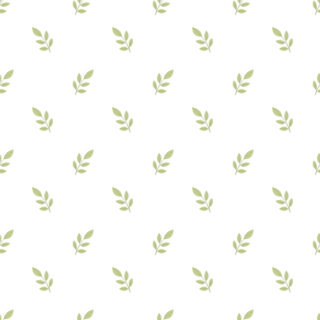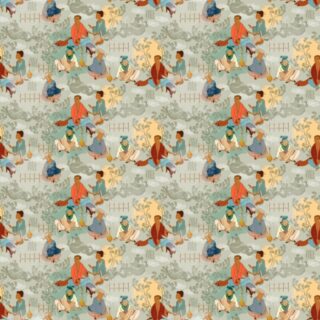In the hustling-bustling city of Ahmedabad, Gujarat lies an art form that mesmerises everyone with its astonishing story. An art form that aims to evoke devotional, calming and intriguing emotions all at once is ‘Mata Ni Pachedi’.
It simply means’ Behind the Mother Goddess (temple)’. Mata Ni Pachedi is a textile painting, hung at the back of the idol in a temple. It has caused storms of demand because of its minute details and vibrancy.
An artwork that demonstrates a story with its enchanting motifs and hues. Whether the absolutely mind-boggling intricate details or immaculate religious impact, Mata Ni Pachedi is an artwork that transcends you beyond its colour and design.
The Story Behind Mata Ni Pachedi
As captivating as this design is, its meaning is much more deeply impactful. Mata Ni pachedi is an art which was primarily practised by the Vaghari community. They were a semi-nomadic tribe who were restricted from stepping into temples.
Even after being banned from entering the sacred space of their goddess, their belief and devotion only grew stronger. To connect and pray, ‘Mata Ni Pachadi’ came to life. It is a textile painting of a goddess which became a portable medium to practise their spiritual belief.
It literally became an embodiment of the goddess herself. It was taken out for rituals and kept inside right after the ritual was done. They found spiritual peace even after being excluded from what they were also a part of.
This revolutionizing form started around 3000 years ago by the nomads of the Vaghari community, on the banks of the Sabarmati river of Gujrat.
Amongst these artists, the Chitara family is one of the most well-known family artists of Mata Ni Pachedi who has been carrying the traditions from generation to generation.
How It Is Made?
The traditional way to draw Mata Ni Pachedi is to paint on a cloth using a bamboo pen. Before even touching the cloth with the bamboo pen, the designs are visualised properly instead of doodling on paper.
Below are the primary steps of Mata Ni Pachedi’s design process:
- The textile that is to be painted requires an intense process.
- It is de-starched, washed, soaked and then a harda (Terminalia chebula) is applied.
- The black ink used is made from iron which takes 15 days.
- It is used in making outlines and drawing designs.
- Red is made using alum and tamarind seed powder.
- The mixture appears yellow temporarily and later on it transforms into its deep red colour as a non-permanent dye used after applying it with mordant alizarin.
- Wooden block printers are used to get an intricate pattern of the goddess or a design.
- After it is done, it’s washed and dried to get rid of the excess dyes in the river.
It’s Motifs And Meanings
Like every popular Indian artistry, Mata Ni Pachedi is well-known for depicting epic Indian stories. The popular ones are Ramayana and Mahabharata.
It primarily depicts the goddess’s figurine in the centre. Lord Ganesha is usually showcased on the left side of Mata (goddess) or the upper side of the cloth.
Below are some of the significant motifs that you can find in this revolutionary textile art form:
Trees: It depicts the sacred connection between heaven and earth. It reflects the abundance of spirituality and vitality.
Conch: It is a crucial element in Mata Ni Pachedi, it is well-known for representing strength in Mata Ni Pachedi.
Swords: It symbolizes the elimination of evil.
Maroon: It is the backdrop colour, and it is well-known for depicting vitality, power and mother goddess.
Black: It is used to ward off evil spirits.
Sun: It represents the endless cycle of life.
Yellow: It is a token of knowledge, prosperity and wisdom.
The Popular Creators Of Mata Ni Pachedi
Even after its otherworldly beauty, Mata Ni Pachedi still stands today to be an endangered art. Many families from the Vaghira community still to this day have been religiously practising this art form to this day.
Let’s jump into the list of well-known artists who have made a difference in the world through Mata Ni Pachedi:
Manubhai Chunnilal Chitara:
Apart from his immaculate work that earned him his national award, his work stands out because of its vibrant art pieces in red, white and black. His art was a mixture of free-hand design and wooden block printing.
He comes from the renowned Chitara family that has made incredible contributions to the enriched Mata Ni Pachedi artistry. Even his Son, Vasant Manubhai Chitara has received a national award for his art that he learned from his father.
Rakesh Bani:
Unlike his peers, Rakesh Bani has added a flair for contemporary art. He uses the traditional practice of Mata Bi Pachedi to showcase a unique idea. His take on the Mata Ni Pachedi art form has gathered immense attention from audiences all over the world.
Govardhan Giri:
Govardhan Giri has been practising the stunning Mata Ni Pachedi artwork for decades. He has gained popularity because of his immaculate intricacy and natural dyes.
In conclusion, Mata Ni Pachedi has been practised for 3000 years. It’s an embodiment of unmatched devotion and rich artistry. It’s a reflection of the bliss of the Mother of the world.
One way to incorporate this enchanting artwork is through Home decor. The key element to switching the mood of an environment is through walls.
I Want This Wallpaper Explore Art Wallpaper Designs
Selecting Mata Ni Pachedi Wallpapers to let your wall sing the rhythm of spirituality and brilliance of ancient art. Check out our design or customise one to display the true beauty of Gujrat all compiled in your wall.
























